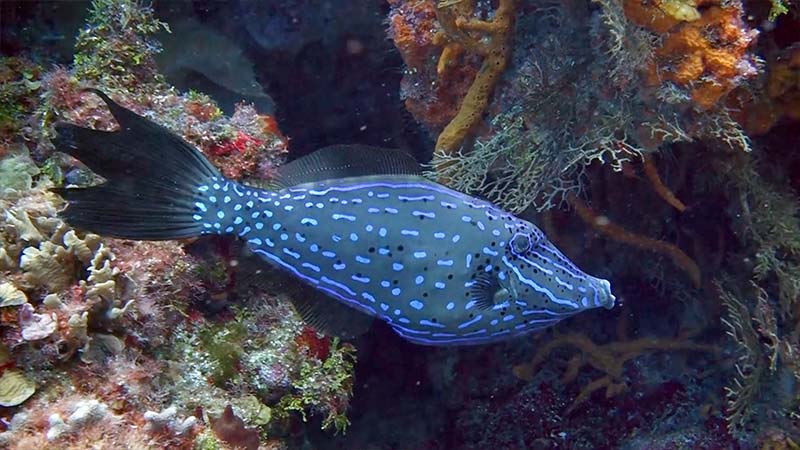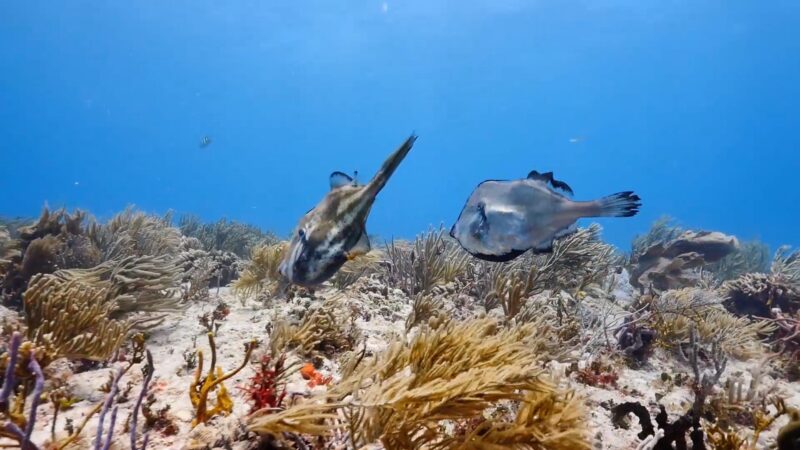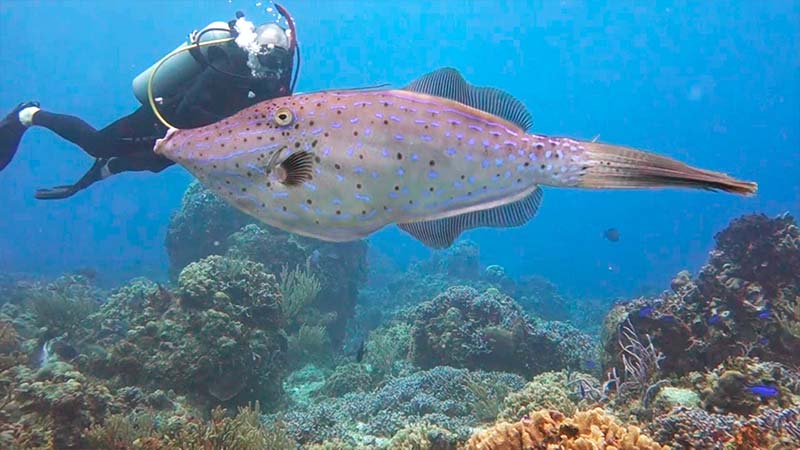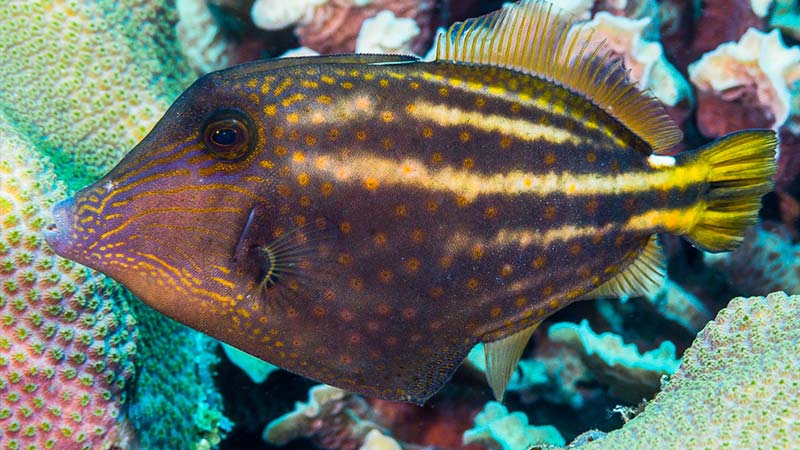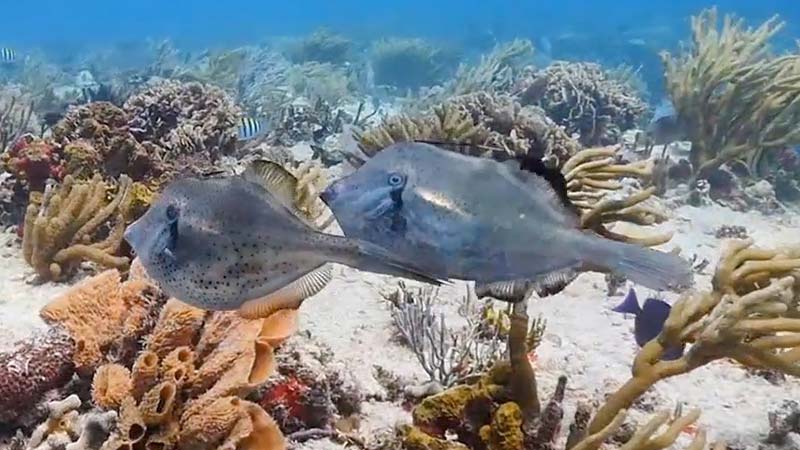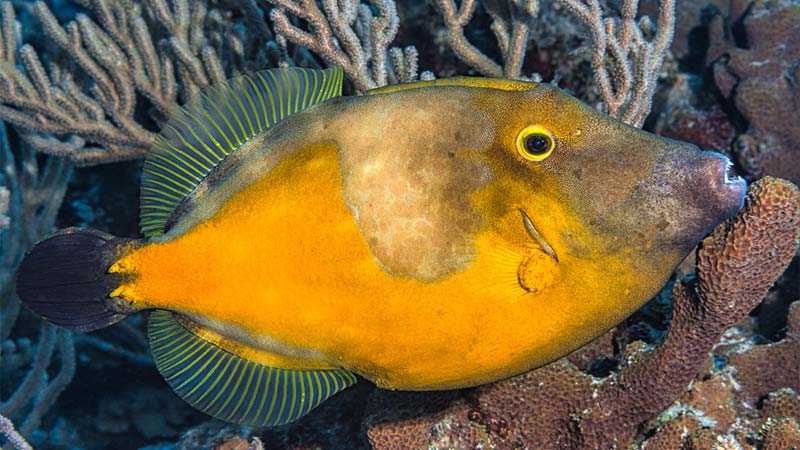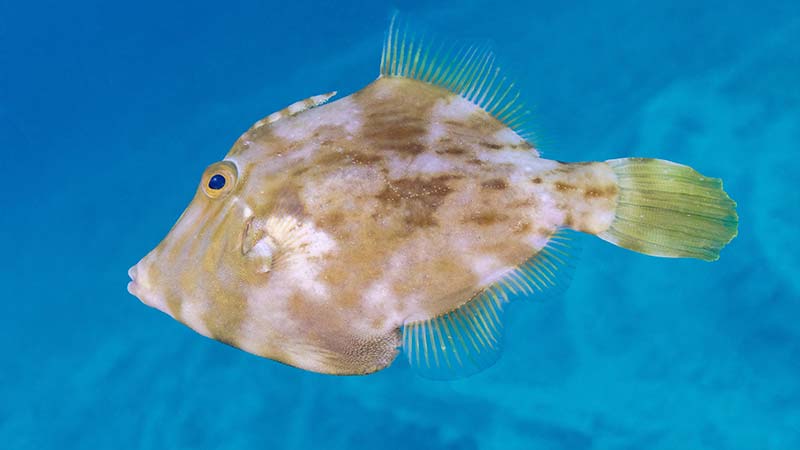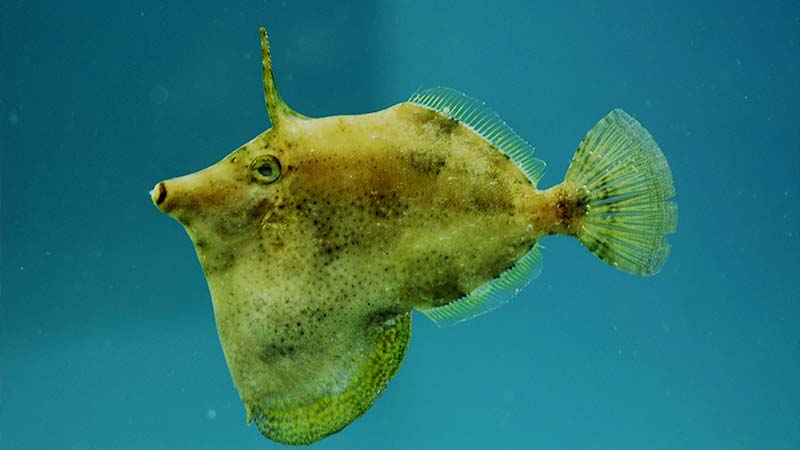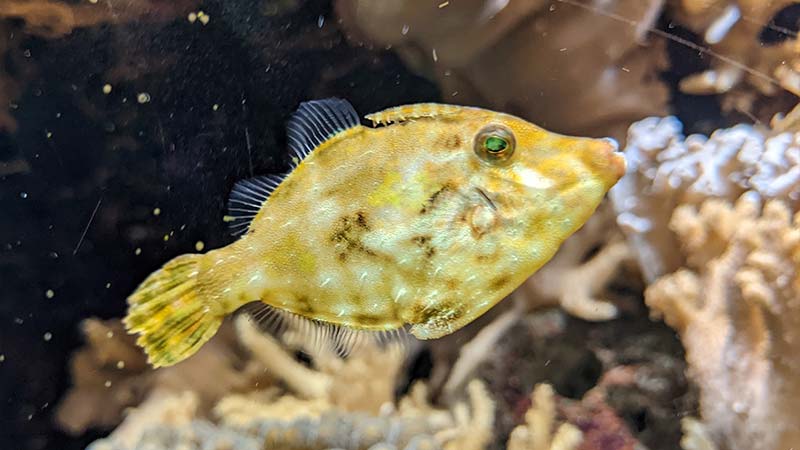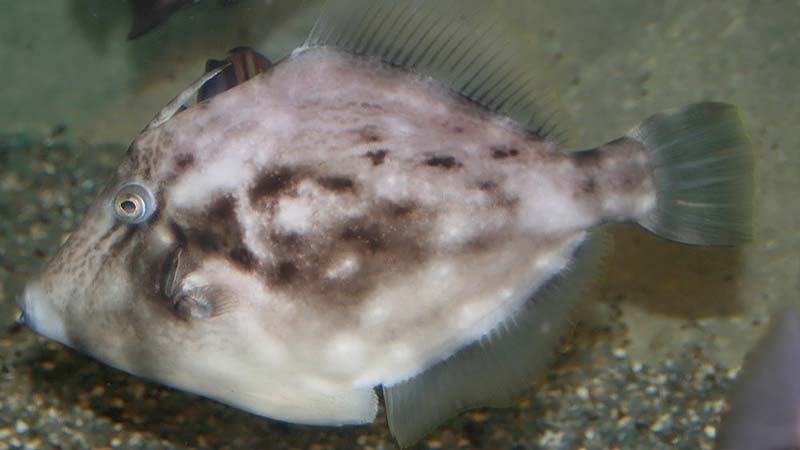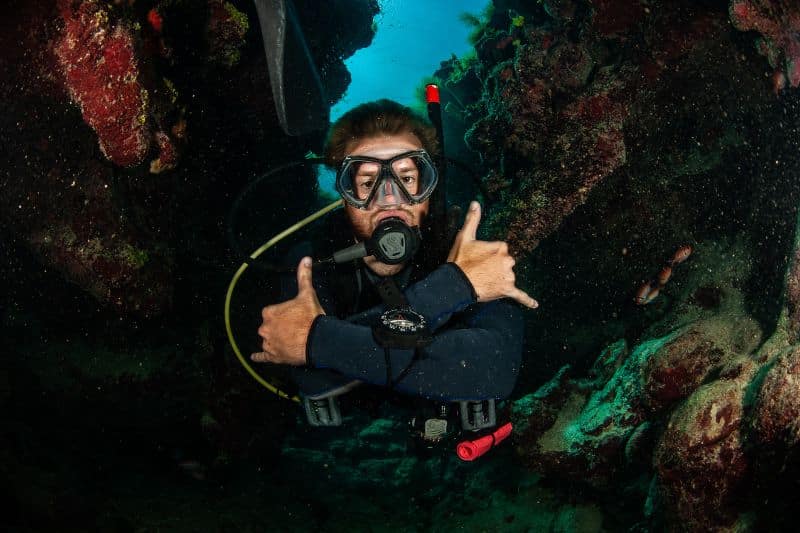1. General characteristics of the Caribbean filefish
1.1. Morphology and anatomy
If you’re a fan of the underwater world, you might have come across file fish during your dives. These diamond-shaped creatures are masters of camouflage. When viewed from the side, their bodies give the impression of being larger than they actually are but viewed head-on, they are thin like the keel of a boat. This sensation is further accentuated when they have their retractable spine deployed on their head.
All species of filefish have soft fins, reminiscent of window curtains. Their tails are fan-shaped and their pectoral fins appear small compared to the rest of their body, so they don’t swim very fast, but they maneuver remarkably well.
Another distinctive trait of all filefish species is their teeth. They are barely visible because they are very small, but they have powerful incisors in both jaws that are ideal for feeding. Their favorite dishes include small crustaceans and algae.
In terms of size, most file fish species do not exceed 60 cm (24 inches) in length, although the Scrawled Filefish exceed these marks.
Another interesting point about these fish is that in some species, males and females differ in terms of shapes and colors.
1.2. Behavior and habitat
Filefish live in tropical and subtropical waters around the world, and of course in the Caribbean.
When they are adults, they love to hang out in shallow waters, usually no more than 30 meters deep. Many filefish species prefer to live on reefs and use their crevices and hiding places to hide. Others love to hide in seaweed, floating upside down among the seaweed to deceive predators and surprise their prey. We can often find species of filefish that have a color pattern that helps them blend in with their environment when they feel threatened and if that doesn’t work, they will retreat to the crevices of the reefs.
1.3. Feeding and reproduction
When it comes to food, filefish species don’t agree. Some species find algae and seagrass delicious, while others like to chew on small invertebrates such as tunicates, gorgonians, and hydrozoans. Others love corals.
Regarding reproduction, filefish are careful when choosing the location where the female will deposit the eggs and they defend it no matter what. In some species, this task is exclusive to the male, while in others they take turns.
When the offspring are born, they head to open waters and take refuge in the seaweed of tuna and dorado: their main predators. As the seaweed is moved by the current, they go back and forth until they are big enough to go to the reef.
So, the next time you go scuba diving and see a filefish, think about all the effort it took to get there.




